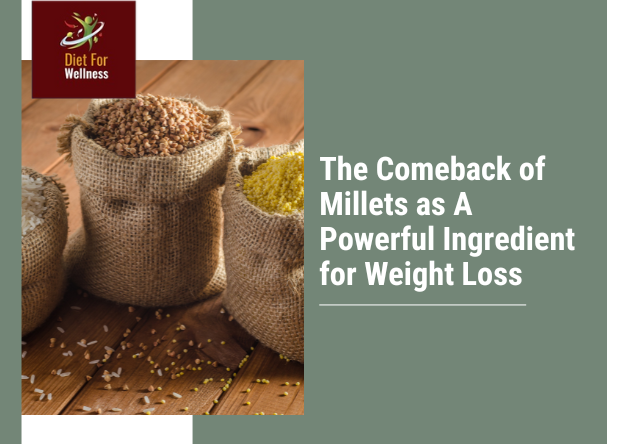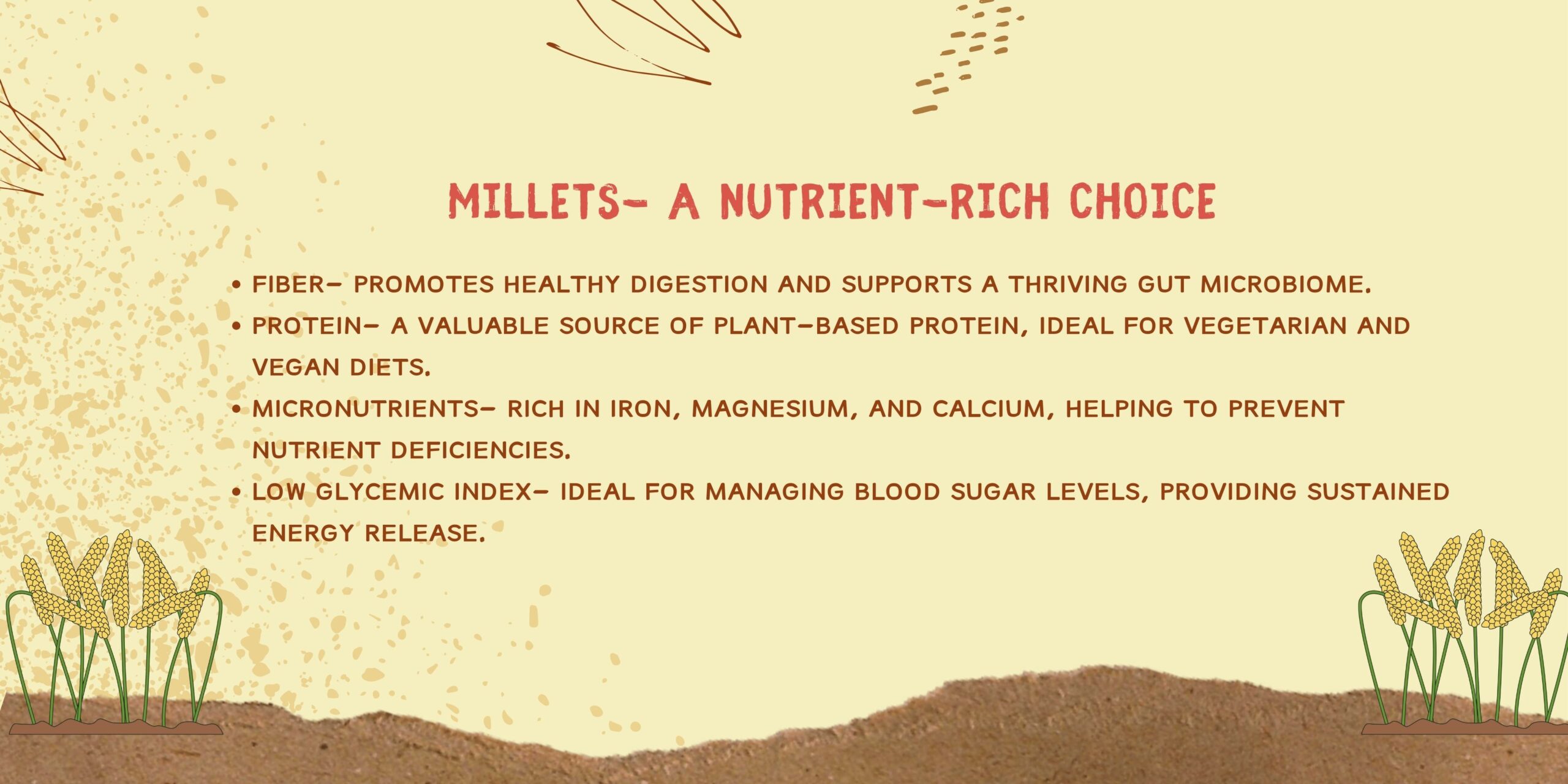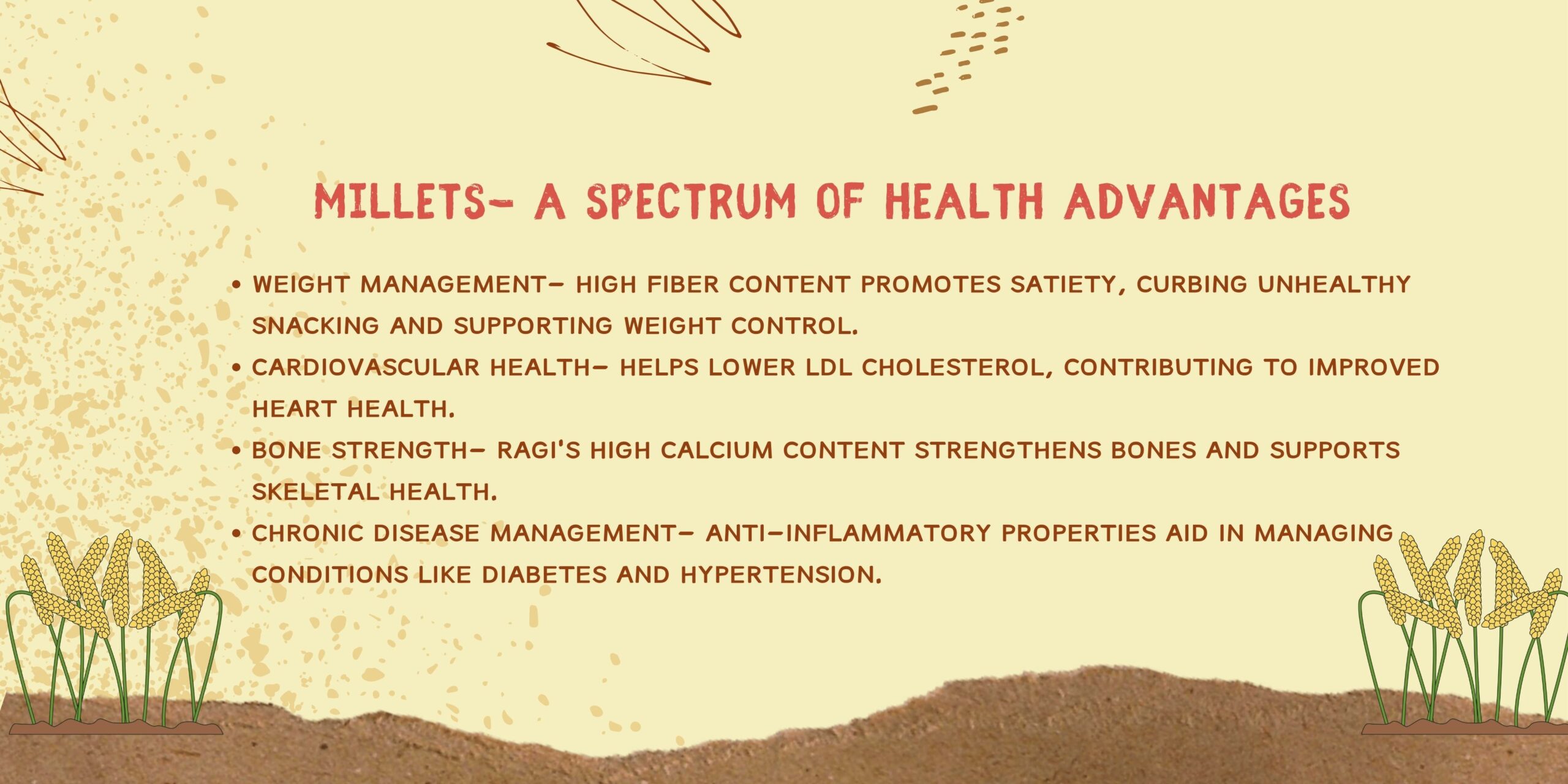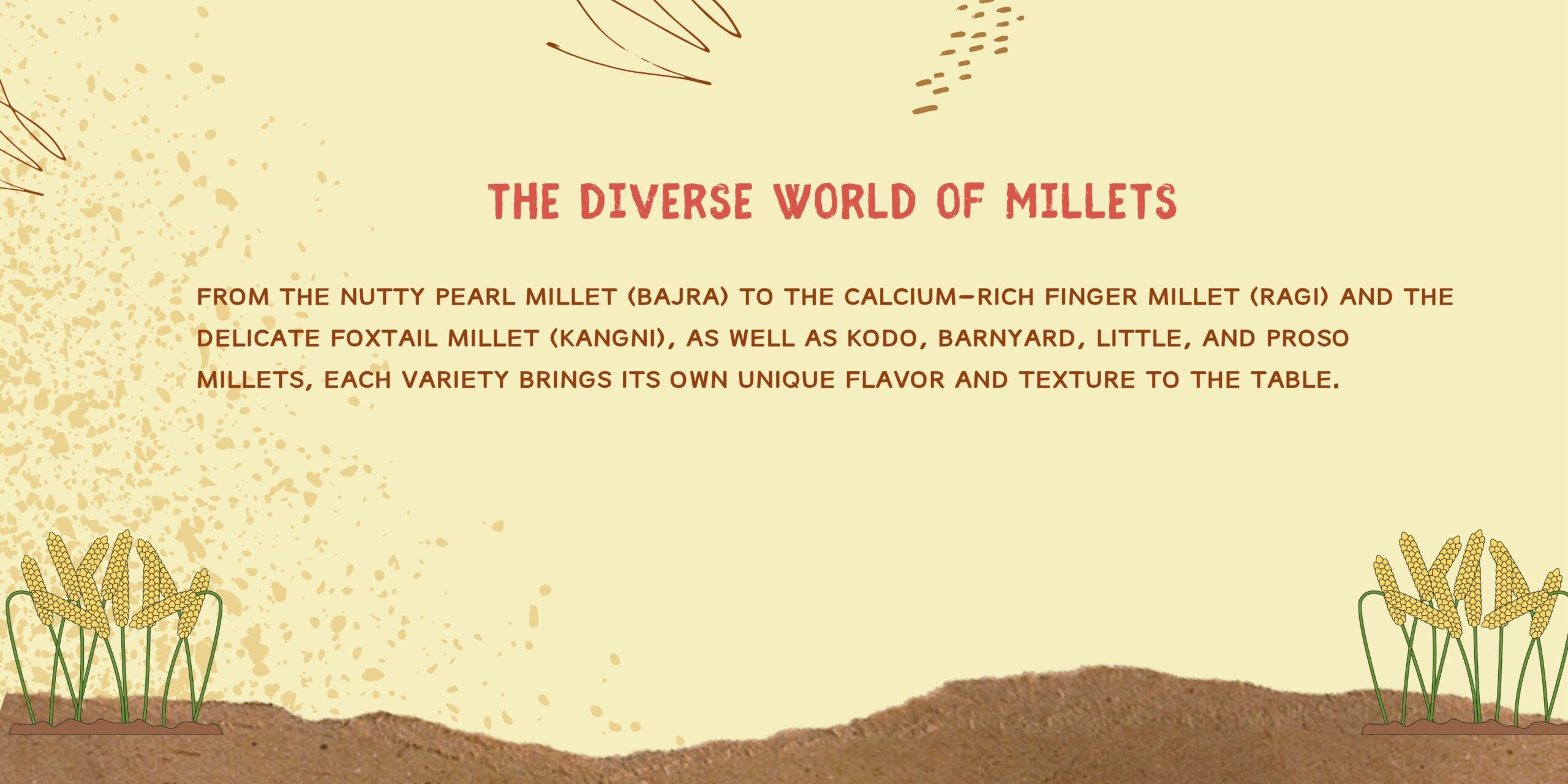The Comeback of MIllets as A Powerful Ingredient for Weight Loss

Ragi, jowar, and bajra were staples in Indian diets in the ancient cultures. These nutritious millets, sidelined by wheat and rice in the later stages, are making a powerful comeback.
While a traditional ragi upma or buckwheat (kuttu) roti might seem outdated in urban settings, they’re reappearing on dining tables across India. This resurgence is driven by a growing awareness of millets’ health benefits and a shift towards healthier lifestyles. Millets have an ability to regulate blood sugar, lower triglycerides, improve digestion, and enhance vitamin absorption. Incorporating them through multigrain flours, rotis, salads, chaats, and khichdi is advised by nutritionists these days.

Traditionally used in rotis and authentic Indian desserts, millets were later dismissed as “poor man’s food” and replaced by refined grains. Now, chefs are innovating, creating delicious dishes to revive their popularity. This revival can be attributed to consumers’ increasing focus on fitness, noting millets’ superior nutritional profile compared to wheat and rice.
Ragi, in particular, has seen a surge in demand among health-conscious individuals. Rich in calcium, magnesium, iron, protein, and fiber, it’s being transformed into ragi dosa, dumplings, pancakes, and porridge.
Beyond whole grains, millet flours are diversifying Indian kitchens. Once limited to a single flour canister, supermarkets now offer a wide range of options, each with unique nutritional and culinary properties. Chefs suggest blending flours to balance flavors and maximize benefits. For instance, ragi, which can be difficult to digest, is often soaked, sprouted, and dried before milling.
There has also been a rise of gluten-free alternatives like ramdana (amaranth) and regional favorites like makkai (corn), jowar, and bajra. Spices and flavorings like cumin, cinnamon, and ajwain enhance these traditional rotis.

Incorporating small amounts of millets into idli, dosa batter, or roti dough is an easy way to reduce the intake of refined grains. Modern processing techniques have also made millets easier to cook.
Bajra, a vitamin and mineral powerhouse, is being reinvented in dishes like halwa, khichdi, and dosas, often combined with other flours. Sweet and savory options abound, from millet cookies and ladoos to Maharashtrian nachni satva and Karnataka’s ragi barfi.
The versatility of millets extends beyond Indian cuisine. They’re being used in global dishes like millet tabbouleh, jowar pancakes, and soups.
This revival isn’t limited to millets. Grains like amaranth, barley, and buckwheat are also gaining popularity. Amaranth, available as flour and grain, is used in rotis, theplas, breads, and salads. Buckwheat, a gluten-free pseudo-grain, is popular during fasting periods and has found its way into international dishes like risotto, noodles, and pizza.
While quinoa and chia seeds have their place, many are rediscovering the nutritional wealth of India’s heritage grains. Millets are back, and they’re here to stay.
From the nutty pearl millet (bajra) to the calcium-rich finger millet (ragi) and the delicate foxtail millet (kangni), as well as kodo, barnyard, little, and proso millets, each variety brings its own distinct flavor and texture to the table.

The Increasing Push for Reviving Millet
Previously forgotten, millet is currently facing a revival stage and more and more people are opting for it in their diet, with added push from nutritionists.
- Ecological Sustainability– Their minimal water requirements and drought resistance make millets a sustainable alternative to resource-intensive crops.
- Health-Conscious Consumers– Growing awareness of their nutritional benefits and gluten-free composition drives demand.
- Culinary Adaptability– Millets’ versatility allows for incorporation into diverse dishes, from traditional porridges to modern baked goods.
- Global Advocacy– Recognition by the UN’s International Year of Millets and government support highlight their importance in addressing food security and climate change.
Integrating Millets Seamlessly into Your Daily Routine
- Breakfast– Opt for a warm, comforting millet porridge or fluffy millet pancakes to begin your day.
- Lunch/Dinner– Replace traditional rice or wheat with satisfying jowar rotis or a flavorful foxtail millet pulao.
- Snacks– Choose from a variety of healthy millet snacks, such as cookies, crackers, or laddoos, for a nutritious pick-me-up.
- Beverages– Enjoy a refreshing and nutrient-packed ragi malt or a creamy millet smoothie.
